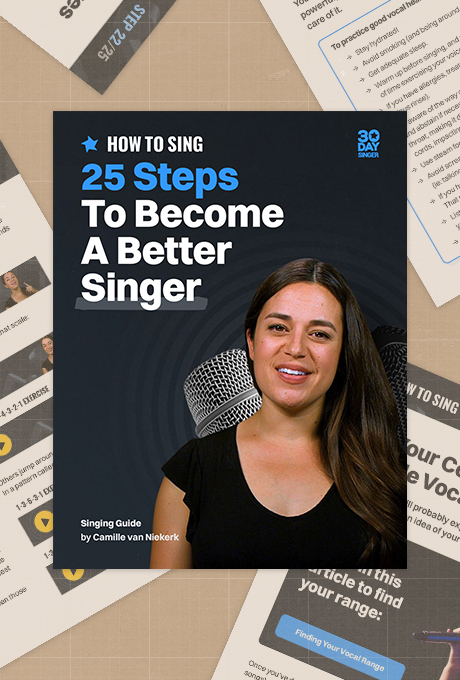Sing Like A Pro
June 2, 2023
Hi, I’m Abram from 30 Day Singer and I’ve designed this lesson to help you stop sounding like a beginner and start sounding like a pro.
One of the biggest differences between a pro and a beginning singer is the use of resonance and vowel modification. When we know how to adjust the shape of our vowels we are able to get a bright and ringing sound from our voice. It's what a lot of people attribute to a trained singer compared to a beginner. A great way to find resonance in your voice is to work on some vowel glides. When we sing Yah or Wah we are moving from a small to a bigger shape. The smaller shape allows us to boost resonance in our vocal tract. However if we just sing into this small vowel we often feel tight or locked in place. On the other hand, when we just sing an open Ah a lot of the time we are leaking too much air and the sound comes out flat or too breathy. Using these two shapes together back and forth helps us find balance and maintain a resonant tone.
Let's try an exercise where we work on lots of resonance boosting with each pitch.
Exercise 1: Weyah (5,4,3,2,1)
The next big tell between a beginner and a pro is the ability to control phrasing despite pitches moving higher or lower. What I mean by this is beginning singers often make the higher pitch louder. While this is natural and pro singer is able to control the volume. Support doesn’t mean louder. It helps us control the pressure to change pitch and maintain an open resonant space.
Exercise 2: Sweeping Exercise (Hujahjahjah 1,3,5,8,5,3,1)
This is a simplification of something you do in a number of songs for better phrasing. Just because a note goes up in pitch doesn’t mean it should sound louder!
Our last concept is simple, but actually takes a lot of constant practice and attention to detail to grasp. The biggest difference between a beginner and a pro is having sloppy pitch accuracy or something refined and calculated. There is no getting around this part of the practice. However there are multiple ways to work on this. Use some external feedback from a pitch monitor app or website or a teacher who has experience with ear training and music theory.
The next step is to organize musical tones into scales. The simplest is the major scale, but let's do the next most common scale, the minor scale. A pro is going to know both major and minor scales as well as a handful of other modes that are less common.


